How to Translate Signs Accurately for Multilingual Environments
In an increasingly interconnected world, the need for clear and accurate communication in multiple languages is more critical than ever. Signs are integral to our everyday lives, whether they direct us to the nearest hospital, inform us about traffic regulations, or alert us to potential hazards.
In environments with diverse linguistic populations—such as airports, hospitals, and urban centers—ensuring that signs are properly translated is not just a convenience but a necessity for safety, compliance, and accessibility.
In this article, we will explore the importance of translating signs, the different types of signs that require translation, the steps involved in translating them accurately, best practices for ensuring translation quality, and considerations to keep in mind.
We will also discuss how tools like PDNob AI Image Translator can streamline the translation process, making it more efficient and effective.
- Part 1. The Importance of Translating Signs
- Part 2. Types of Signs that Need Translation
- Part 3. Steps to Translate Signs
- Part 4. Best Practices for Translating Signs
- Part 5. Considerations When Translating Signs
- Part 6. Step-by-Step Guide: How to Translate Signs with PDNob Image Translator
- Part 7. Conclusion
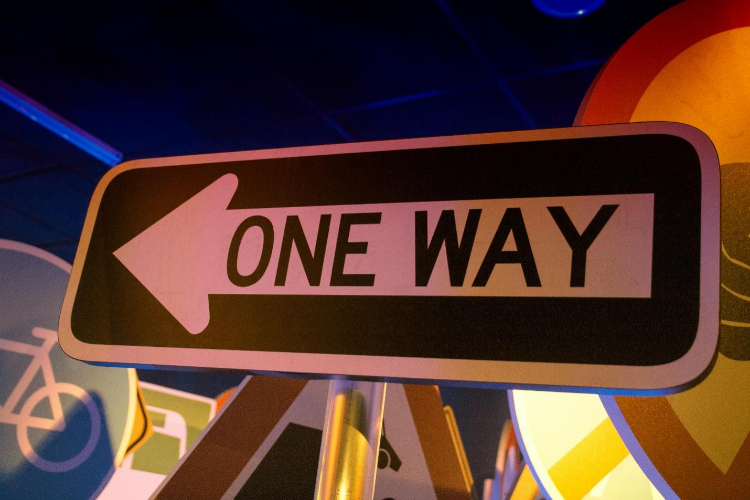
Part 1. The Importance of Translating Signs
Signs are an essential means of communication in public spaces, commercial areas, and legal environments. They convey critical information ranging from safety warnings to directions, and legal notices. In many global cities, multilingualism is common, and accurate translation of signs is imperative to avoid confusion, prevent accidents, and comply with legal requirements.
For instance, an airport with a high volume of international travelers must provide signage in multiple languages to guide passengers through security checks, customs, baggage claim, and more.
In hospitals, clear signage in various languages is crucial for guiding patients, staff, and visitors to the right departments and emergency exits. Even road signs and safety warnings need to be understood universally, as they may involve life-threatening situations.
Part 2. Types of Signs that Need Translation
The need for translation varies depending on the type of sign. Signs in public spaces, commercial establishments, and governmental or legal areas all have different purposes and require different levels of attention during translation.
Public Signs
Public signs are among the most visible and commonly encountered signs. These signs provide essential information that guides the public in various environments.
They include:
- Safety Warnings: Signs indicating potential hazards such as “Wet Floor,” “Fire Exit,” or “Danger: High Voltage.” In multilingual cities or regions with diverse populations, it is critical that these warnings are translated into all relevant languages to prevent accidents.
- Street Signs and Directions: Road signs, pedestrian crossing signs, and directions to landmarks or destinations need clear and accurate translations to guide individuals in unfamiliar areas. These signs ensure safe and efficient navigation, especially in busy urban centers or tourist hotspots.
Commercial Signs
Commercial signs are essential in businesses, especially in international settings.
These signs include:
- Menus and Pricing Information: Restaurants, food outlets, and stores that cater to international customers often provide menus and price lists in several languages. This ensures that customers can understand the offerings and make informed purchasing decisions.
- Store Promotions and Advertisements: Signs promoting sales, discounts, or new products need to be clearly translated to reach a broader customer base. Inaccurate or awkward translations can negatively affect customer perception and sales.
Legal or Governmental Signs
Legal and governmental signs are especially important for compliance and public safety.
They include:
- Regulatory Signage: These signs provide important legal information such as “No Parking,” “Speed Limit,” or “Permit Required.” In multicultural regions, these signs need to be translated accurately to ensure that they are understood by all residents and visitors.
- Traffic Laws and Safety Information: Signs that direct traffic or provide safety instructions (such as road closures, detours, or construction warnings) must be carefully translated to avoid accidents or confusion.
- Health and Safety Regulations: Hospitals, workplaces, and other public institutions need to display health and safety protocols. These could include guidelines on COVID-19 precautions or emergency evacuation routes. Accurate translation is necessary to ensure compliance with local and international regulations.
Part 3. Steps to Translate Signs
The translation of signs requires a systematic approach to ensure accuracy, clarity, and cultural sensitivity. Here are the key steps involved in translating signs effectively:
Assess the Cultural Context
Before translating a sign, it is crucial to understand the cultural context of the target audience. Certain symbols, colors, or phrases might have different meanings in various cultures, and what works in one region may be confusing or even offensive in another. For instance:
- The red color commonly indicates a warning or danger in many Western cultures, but in other regions, it might have different connotations.
- Certain images, such as a "thumbs-up" gesture, might be positive in one culture but offensive in another.
Choose the Right Translation Method
There are two main translation methods: manual translation and machine translation.
Part 4. Best Practices for Translating Signs
To ensure that sign translations are clear, accurate, and effective, follow these best practices:
Consistency in Terminology
Consistency in terminology is vital for clear communication. Whether translating a menu, safety warning, or legal instruction, it is important to use the same terms throughout. For example, if you are translating signs in an airport, the same phrase should be used for all signs referring to “restrooms,” “gates,” or “baggage claim” to avoid confusion.
Ensuring Readability of Translated Text
The readability of the translated text is just as important as the accuracy of the translation. The translated text should be easy to read from a distance, especially for safety signs and directional signs.
Preserving Visual Layout and Design Integrity
A sign's visual design plays a key role in how quickly and easily information can be understood. When translating signs, it’s essential to preserve the layout, color scheme, and use of icons or symbols. The translated text should fit within the same space as the original text without disrupting the design.
Part 5. Considerations When Translating Signs
While translating signs, several considerations should be kept in mind to avoid common pitfalls:
Misunderstanding Cultural Context
One of the biggest challenges in sign translation is understanding and respecting cultural differences. Words, colors, and symbols may have different meanings depending on the region. Working with native speakers or cultural experts ensures that the translated signs are appropriate for the target audience.
Overlooking Typography and Legibility
Typography plays a huge role in the readability of translated signs. Using complex fonts or overly stylized lettering can make the text harder to read, especially for non-native speakers or in emergency situations. Ensure that the font used is clear, legible, and easy to read from a distance.
Using Automated Translation Tools Without Reviewing the Final Output
Automated translation tools are fast, but they are not always accurate. It is important to carefully review and proofread any machine-generated translations, especially for signs related to safety, legal matters, or health. Review the output for accuracy, clarity, and cultural appropriateness before finalizing the sign.
Part 6. Step-by-Step Guide: How to Translate Signs with PDNob Image Translator
One useful tool for translating signs is PDNob Free AI Image Translator, which allows users to translate text within images. Many signs are presented in graphic formats (e.g., photos of street signs, menus, or posters), and extracting the text for translation can be challenging. PDNob Image Translator simplifies this process by extracting the text from images and providing instant translations.
5 Simple Steps to Translate Signs Using PDNob Image Translator
- Upload the Image
- Select the Source Language and Choose the Target Language
- Extract and Translate
- Review and Download
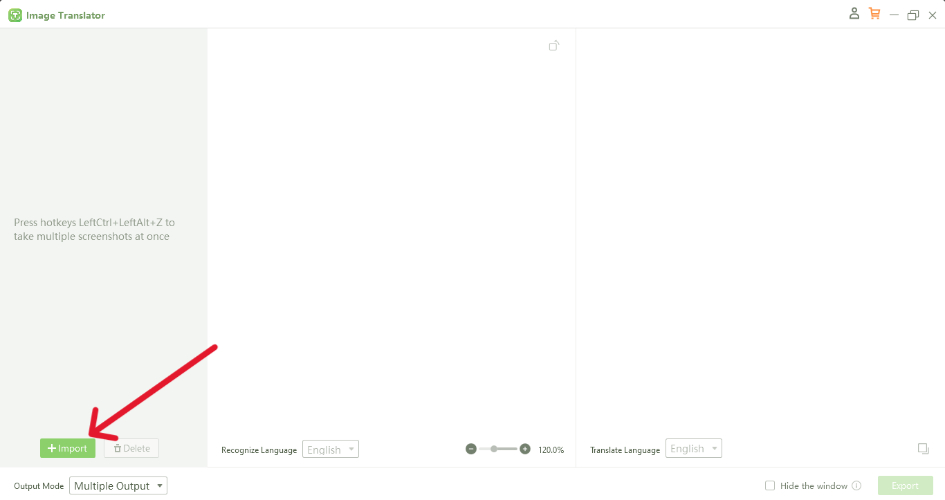
o Capture or upload the image of the sign you want to translate.
o Choose the language of the text in the image (e.g., English, French).
o Select the language you want the text to be translated into (e.g., Spanish, Chinese).
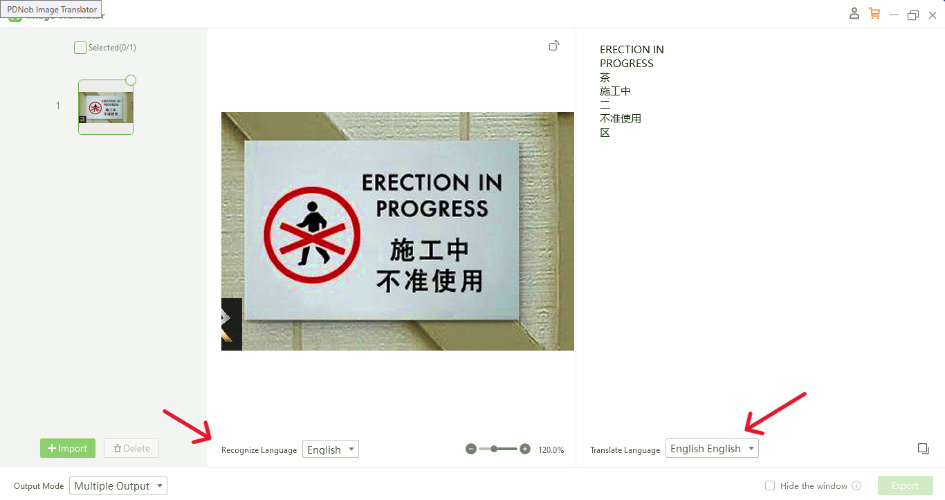
o Click “Translate” and let PDNob Image Translator automatically extract and translate the text from the image.
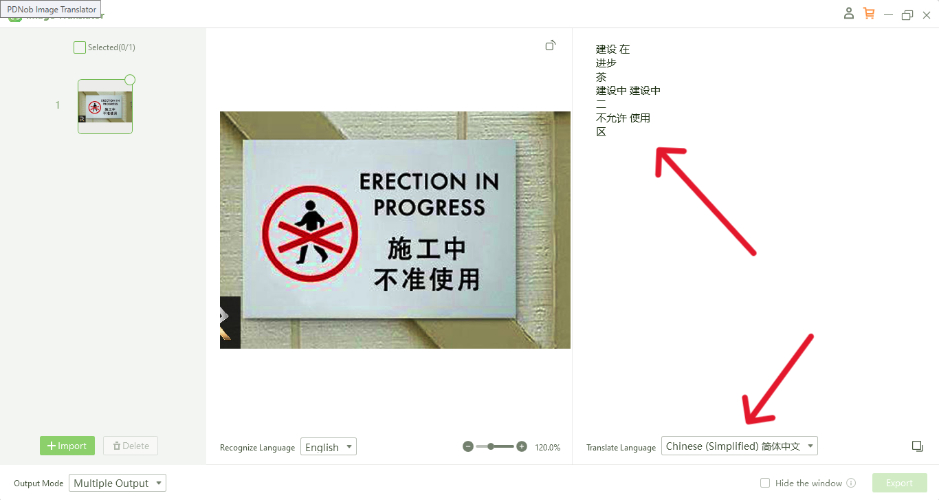
o Check the translation for accuracy, then download or share the translated text or image.
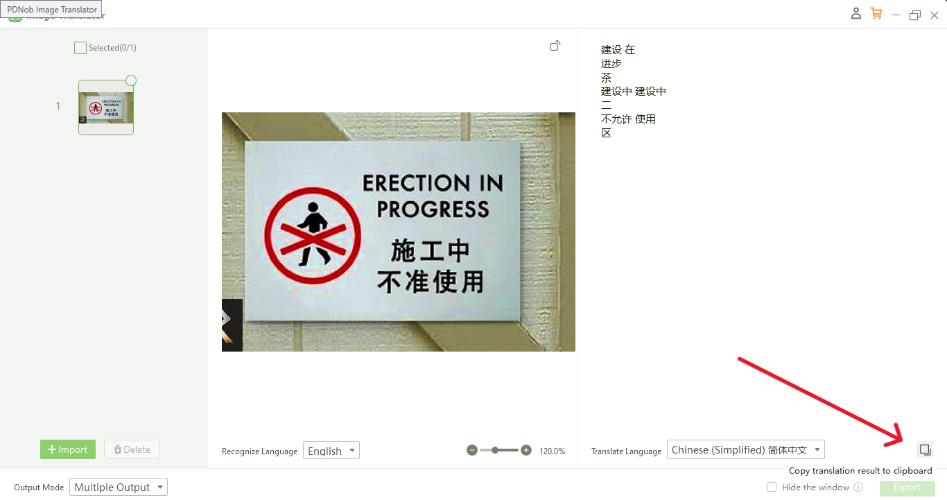
Part 7. Conclusion
Accurate translation of signs is essential in multilingual environments to ensure safety, compliance, and effective communication. Whether in public spaces, commercial areas, or legal contexts, signs must be carefully translated to avoid misunderstandings or potential hazards.
Tools like PDNob AI Image Translator can simplify the process, especially when translating signs embedded in images. With careful attention to detail and the right resources, you can ensure that your translated signs are clear, accurate, and culturally appropriate for all audiences.
Speak Your Mind
Leave a Comment
Create your review for Tenorshare articles
 PDNob Image Translator
PDNob Image Translator
Instantly translate various types of images to text.








